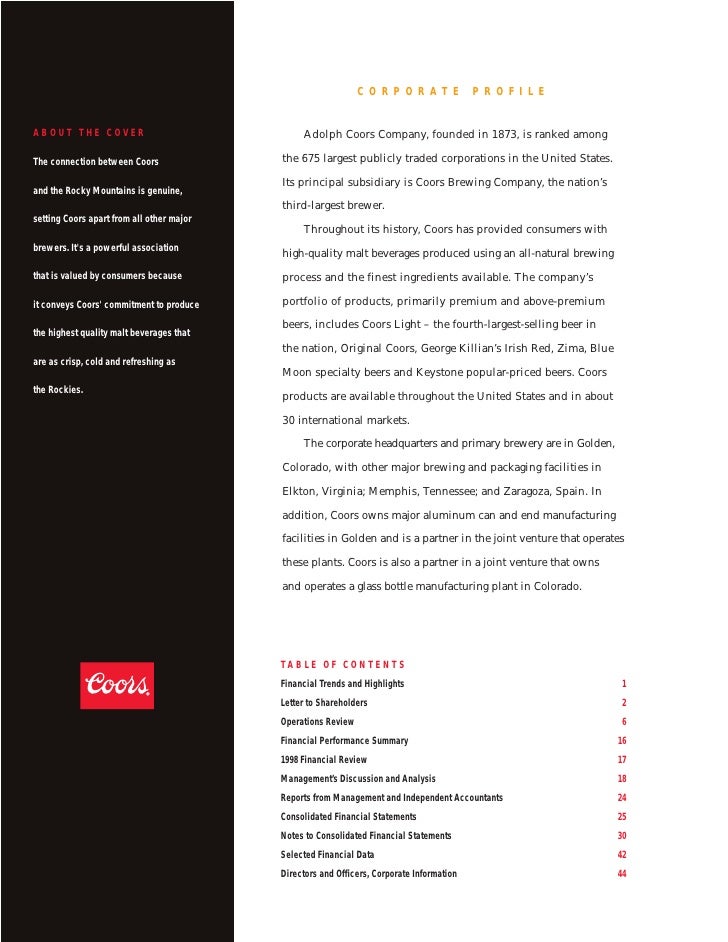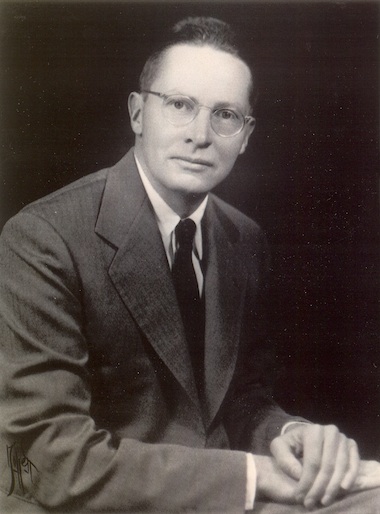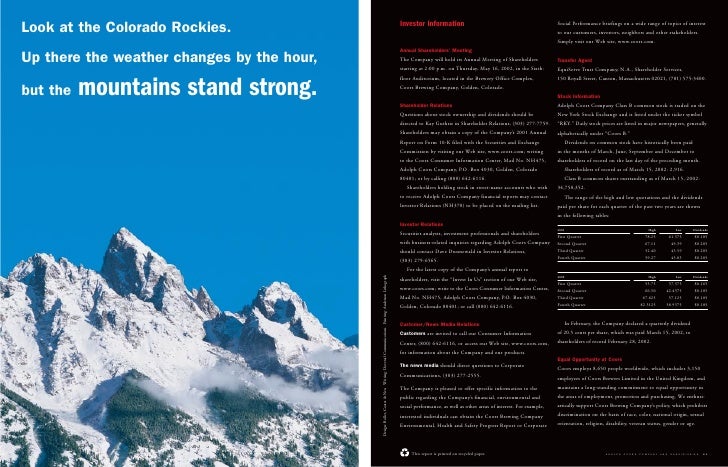Adolph Coors In The Brewing Industry Pdf To Jpg
- Brewing Industry Jobs
- Brewing Industry Statistics
- Adolph Coors In The Brewing Industry Pdf To Jpg
- Adolph Coors 111
Adolph coors in brewing industry pdf, adolph coors in the brewing industry - s3-eu-west-1, adolph coors company (a) - tuck school of business, 1997 annual report adolph coors company - iis windows server, adolph coors company 1996 annual report, vertical. Molson Coors Brewing Company 2006 Annual Report Molson Coors Brewing Company Annual Report 2006 Molson Coors Brewing Company Denver Montreal. In the global brewing industry. We are also happy to report that the Molson Coors Board has come together very well. We have a highly cohesive, effective and aligned. The Coors Brewing Company managed to survive Prohibition relatively intact. Years before the Volstead Act went into effect nationwide, Adolph Coors with sons Adolph Jr., Grover, and Herman established the Adolph Coors Brewing and Manufacturing Company. Adolph Coors in the Brewing Industry case study solution, Adolph Coors in the Brewing Industry case study analysis, Subjects Covered Industry analysis Industry. English PDF Spanish PDF. Selected Exhibits from Adolph Coors in the Brewing Industry. Adolph Coors in the Brewing Industry Uploaded by brewit on Aug 13. Beneficiaries of the Adolph Coors brewing company and family fortune. Four years after the Adolph Coors Company had set up shop across the Atlantic, the Bass brewing company was turning out more than a million barrels a year. Adolph Coors In The Brewing Industry Pdf. 1/28/2018 0 Comments Coors Light - Wikipedia. Coors Light is a 4. Bargaining power of suppliers, bargaining power of buyers. Case study 4 1. Adolph Coors and the brewing industry Case study 4 Aditya Ishan 2. Introduction The following report presents.
Disclaimer: This work has been submitted by a student. This is not an example of the work produced by our Essay Writing Service. You can view samples of our professional work here.
Any opinions, findings, conclusions or recommendations expressed in this material are those of the authors and do not necessarily reflect the views of UK Essays.
Introduction
Coors Brewing Company was founded by Adolph Coors in 1873. The company has a long history but one of the most significant events that marked Coor’s service excellence happened in 1985. In that year, overall sales report in the brewing industry revealed that most companies were not profiting from operations. However, even during a difficult time, Coors Brewing was able to account for a sufficient percentage in the market in terms of sales. Statistics then also revealed that the sales of the company increased b y 13 percent, amounting to $1 billion in revenue, which is the highest amount the company had ever acquired in its entire operations. From then on, Coors Brewery had undergone various changes in management, marketing, production, and distribution.
The primary objective of the case study analysis is to obtain an overview of Coors Brewery, most importantly during the company’s peak in 1985. The analysis will involve the identification of the company’s management strategies in order to face the various challenges and difficulties experienced during that time, especially in the brewery business. The strategies that were employed will be studied in order to determine how each one rationally addressed the internal and external issues that affected company operations. Questions about the efficiency or inefficiency of these strategies will be asked in order to determine how and in what ways Coors was able to accomplish organizational success.
After assessing Coors Brewery’s management and overall strategies, recommendations will be determined in order to contribute to the improvement of company operations. The analysis and application of different themes and concepts in strategic management are also expected to help in formulating sound and efficient recommendations for strategic management in the company.

Company Background
Before 1985, Coors underwent various changes due to internal or external factors that affect the management of the company. In 1930s, operations were resumed for Coors and the continued distribution of the company’s beverage led to its expansion to ten other states in the Western US. The Great Depression that began in the early 1930s however, disrupted the company’s operations. Coors was only able to make up for its losses in the 1940s, after the Great Depression. Coors modified the company’s marketing strategies and repackaged its bottle in order to obtain a larger consumer base. Repackaging and marketing efforts led to Coors’ wide distribution of its products to the US military (Coors Brewing Company, 2010).
Earlier efforts to repackage the products offered by Coors were continued until the 1950s. Coors Brewery once again repackaged the company’s beer product in order to address sustainability concerns. Thus, Coors Brewery was able to exhibit corporate social responsibility even then. The company’ s beer products were packaged in aluminum cans in order to encourage recycling. In the 1960s, product development strategies were applied. Coors Brewery introduced the company’s newest product, the Yellow Bellies. Along with the expansion of the company’s existing products, distribution expanded to include 16 other states in the country (Coors Brewing Company, 2010).
Coors Brewery continued to expand until the company’s most momentous expansion across the Mississippi River. The company also repackaged its products and added variety, by offering its beer products in different can sizes. Coors Brewery also worked on improving the company’s brand in order to add value to the organization. The company changed its label to primarily appeal to a wider consumer base. After the 1980s, the operations of Coors continued until the company was able to gain recognition in The Great American Beer Festival. The company continued to focus on improving the taste of its beer products and repackaging them to fit branding changes. Expansion continued until the company was able to distribute to Indiana (Coors Brewing Company, 2010).
Significant social changes in the 21st century, especially in popular culture, led Coors Brewery to include fashion and pop culture as a primary consideration in repackaging the company’s beer and marketing its various products. Thus, Coors Brewery has four different products, which the company describes as “Y2K-friendly redesign in 2000, boasting ‘original’ in proud fashion in 2003, the red and white ‘banquet’ icon makes a comeback in 2004, and a bold, new look that pays respect to its Western spirit and legendary past surfaces in 2007” (Coors Brewing Company, 2010). Since the coming year is the start of another decade, Coors Brewery is expecting to adopt new changes based on the influencers in the company’s internal and external environment.
Company Goals and Objectives
Since the company was founded in the 1980s, the company has undergone continuous transformation in order to increase the company’s revenue. Coors Brewery’s primary strategy then was to expand to various industries “including porcelain, food products, biotechnology, oil and gas, and health systems” (Ghemawat, 1987, p. 1). Although the company has also gained significant amount of revenue from its various ventures, Bill Coors, the Chairman of Coors Brewery emphasized that the foundation and continued growth of the company will always be dependent on its brewery business. As a result, the company underwent drastic changes during the late 1970s and early 1980s with its primary objectives to: (1) gain competitive advantage and (2) continue the company’s transformation and expansion for further improvements and revenue increase.
The competitive environment in the brewery business is a primary factor that affects major decisions in organizational management. The primary concern regarding this issue involves the evaluation of competition in the US brewing industry based on its industry structure, in terms of procurement, production, distribution, and marketing. In the 1980s, the demand for beer in the US was at an all time high. The high demand for beer products has prompted Coors Brewery expand to another location in order to keep up with the increasing consumer demand for beer (DeYoe, 2003). Aside from demand, existing rivals for the company also pushed Coors Brewery to expand to another location in order to add value to the organization and increase its existing consumer base.
Maintaining competitive advantage and fueling a smooth transformation or expansion within the organization also meant that Coors Brewery must be able to change its operations in various areas and divisions, especially marketing. The company did not only need to expand its business to increase its delivery of goods, but Coors Brewery also focused on marketing, and modified practices and strategies in procurement, production, and distribution. In order to change the unfortunate situation of Coors Brewery in previous years, the company had to implement organizational change as its core strategy.
Brewing Industry Jobs
Core Strategy: Organizational Change
Organizational change at Coors Brewery included transformations in the major areas or divisions of brewery – procurement, production, distribution, and marketing. Planned transition began in the late 1970s. Procurement of the company’s raw materials became a meticulous process, as selection was primary based on the quality of products. The management was also specific about how the company’s beer was to be produced and distributed. “Coors beer was not pasteurized, but cold filtered and shipped in specially insulated rail cars and trucks… its special handling, and limited availability led to a mystique attaching to Coors” (Blocker, Fahey & Tyrell, 2003, p. 174). Furthermore, Coors continued to expand distribution to more states and marketing extended to a wider market segment. “As part of the expansion, Coors built a packaging plant in the Shenandoah Valley of Virginia in 1985 and acquired a brewery in Memphis in 1990… introducing a line of Blue Moon specialty beers” (Blocker, Fahey, & Tyrell, 2003, p. 174).
The succeeding discussions will focus on the specific strategies that were implemented by Coors Brewery in terms of procurement, production, distribution, and marketing, that commenced organizational success within the company in 1985.

Procurement
As part of the company’s procurement strategy, Coors Brewery increased its standards to ensure that the it will only acquire the highest quality of raw materials to produce beer. Thus, the company only relied on sources of raw materials that will meet its standards. For 60 years, Coors Brewery maintained that its products are made from “pure Rocky Mountain spring water”, which defined the company’s image for years and branded the high quality of its products. The company has acquired water rights in order to access pure spring water from 60 available springs in Colorado. Thinking ahead, the company also, over the years, added and expanded its reservoir capacity over the years to continue production in the event that its pure spring water sources are affected by dry spells.
At present time, organizations rely on outsourcing in order to save on operational cost. Coors Brewery, however, was not keen on outsourcing its raw materials as the company believed its strategy will lessen the supplier’s buying power. The strategy also contributed to the company’s strong brand image as it conveyed how the company was willing to spend more by refusing outsourcing just to maintain the quality of its products. Instead of obtaining its supplies of malt from different farmers, Coors Brewery chose to produce its own by developing and maintaining its own grain processing facility.

Even as early as the 1980s, Coors Brewery was already aware of its responsibility to local communities and its stakeholders. Corporate social responsibility and sustainability management practices were already implemented when Coors Brewery spearheaded the use of aluminum cans for packaging instead of bottles. Although the production of aluminum cans was more expensive than the bottles, Coors Brewery was willing to spend more in order to become an advocate for recycling. Again, the company did not rely on outsourced packaging products but also opted to create its own facility that creates aluminum materials. The company also creates its own paper labels and other packaging materials apart from aluminum. Overall, self-sufficiency was Coors Brewery’s strategy in procurement.
Production
Maintaining quality and meeting demands are two of Coors Brewery’s strategies for production. To maintain beer quality, the company ensures that the product is aged appropriately. The company has created value for the organization by ensuring that its products are of higher quality than other companies that age beer within a shorter period o time. Coors Brewery aged its beer appropriately as a means to address consumers’ health concerns. By prolonging the process of fermentation, the company lessens the amount of additives that will be added to the product. The company also maintains an efficient Quality Assurance strategy by checking for bacterial contamination frequently.
Distribution
The company implemented a freshness policy where products that were not sold after 60 days were removed from the shelves. As previously discussed, distribution strategies were improved by extending the company’s reach to more states. Routes were well-planned and channels for transportation were developed to ensure that the products will remain in terms of quality and will be transported to buyers on time. The company was established well meaning relationships with wholesalers in order to earn their trust and gain loyalty. By 1985, the company was able to acquire a significant number of wholesalers and partner companies that carried the brand.
Marketing
Marketing strategies focused on emphasizing the company’s commitment to providing high quality beers and ensuring that it supports important issues, such as environmental and health-related concerns. The company also diversified by targeting other market segments. In previous years, the company’s consumer base primarily consists of middle to upper class White American consumers and members of the military. The company however, decided to expand to other segments such as minorities – Black Americans and Hispanics – and to cater to various ages and segments by introducing different brands and products. The company launched light beer for health-conscious consumers, premium dark brands were introduced as a luxurious product for its elite consumers, flavored beers were also sold for athletes, branded for women, and so on.
Effectiveness of Coors Brewery’s Strategies
(2) evaluate the effectiveness of these strategies;
Brewing Industry Statistics
(3) explain why these strategies are effective or ineffective; and
Adolph Coors In The Brewing Industry Pdf To Jpg
Recommendations
Adolph Coors 111
(4) recommend any changes that should be made to increase the effectiveness of these strategies.